
Content
Welcome to the Club of Amsterdam Journal.
The Future Now Show about Intuition / Life Energies with Peachie Dioquino-Valera
“Scientists have always said: “In our physical plane, we have only discovered the tip of the iceberg.” When labels such as: “Esoteric Psychology”, “Esoteric Science/Scientist”, “Paranormal Psychology”, “Human Energy Science”, “Life Energies Science”, “Spiritual Metaphysics” are mentioned, most of us will either nod our heads in disbelief, violently shirk out of fear of the unknown, or fall into a curiosity muse. The above mentioned are claimed by some physicists, a few psychology professionals, and a minority of scientists to be emerging legitimate forms of knowledge-hopefully to be recognized in the future as a formal body of science with a definite set of universal laws. In Peachie’s talk she will delve on the recorded existence of Intuition, Life Energies, & Psychism based on her research and 16 years of experience taking on pro-bono cases that deal with real human (and spirit) cases in the Philippines. This will offer an insight too on why there is a booming economy and research on: alternative energy healing modalities i.e. Reiki, Pranic Healing, Crystal Healing, Sound Healing, etc.; paranormal investigators (who even aid organizations such as the FBI, CIA, or the police force and detectives); intuitive counsellors or therapists; and the like. This phenomenon of a topic has challenged humanity in the past, is still continuously being studied and recorded in the present, and will be discussed more in an academic and public setting in the Future, which will be considered highly evolutionary.” – Peachie Dioquino-Valera
Felix B Bopp, Founder & Chairman
Science fiction offers a useful way to explore China-Africa relations
By Nedine Moonsamy, Senior Lecturer, University of Pretoria
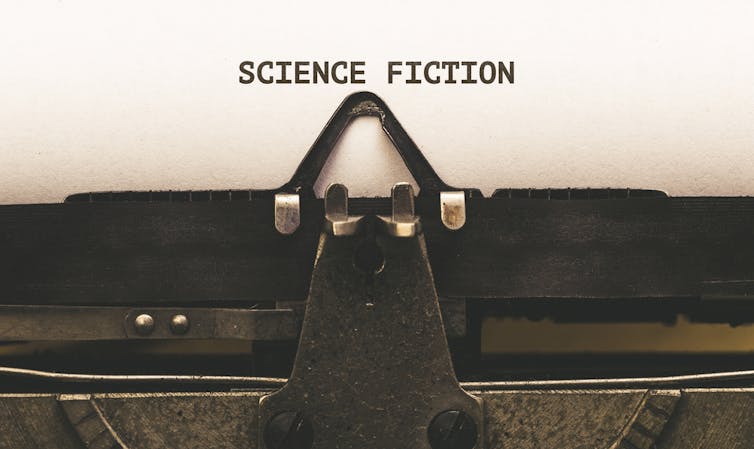
Nedine Moonsamy, University of Pretoria Science fiction can serve as an imaginative production of political theory. Shutterstock
In 2007 the then President of China, Hu Jintao, delivered a speech to South Africans acknowledging the benefits of a strategic partnership. He also stressed that the connection is not merely pragmatic. It must, he argued, serve to honour and deepen the countries’ long abiding friendship in the future.
The idea of friendship has undoubtedly informed the nature of Sino-African engagement. But if we use contemporary science fiction as a barometer, African sentiment towards China appears more inclined towards dystopian forecasts.
Science fiction writing often serves as a thought experiment that explores shared and hidden beliefs whose material and political reverberations lie further in the future. Various short stories portray how China’s economic ascension, operating under the guise of African development, uses technology as a means to invade and control Africa.
Narratives of this kind surface neo-colonial fears that a “new scramble for Africa” seems imminent. But they also provide a speculative arena to interrogate how we ultimately perceive the value, use and future of Sino-African political friendship.
As I’ve explored in my research, this means that science fiction can serve as an imaginative production of political theory. It intercedes in ways that international relations cannot because of the confines of diplomacy.
Three stories
My research focused on three short science fiction stories from Africa.
In the first, Tendai Huchu’s “The Sale”, China has taken control of Zimbabwe through the production of a corporatised state called CorpGov. It’s a surveillance state that leaves no room for political dissension. Zimbabwe has been purchased by China in a piecemeal fashion. It is now set to lose its last free portion of land in a final sale. When a young Zimbabwean man fails to prevent the sale of this remaining plot of land, he succumbs to despair and puts himself in the path of a Chinese bulldozer.
His suicide evokes a sense of profound helplessness and warns that China will need to be vehemently counteracted in the near future to protect Zimbabwe’s already breached borders. Huchu’s narrative provides a sharp sense of clarity that makes the story incredibly impactful.
The pathos of “The Sale” holds a mirror up to China. It communicates an earnest appeal for more humane engagement. Yet the heaviness of its dystopian narrative also breeds a spirit of nihilism or Afropessimism. This overrides any sense of African accountability in the degenerative state of future Sino-Zimbabwean relations.
Abigail Godsell’s “Taal” (an Afrikaans word meaning “language”) is self-conscious in this regard. It’s set in the year 2050, after a nuclear war between China and America has left the entire globe in a state of desolation. As a result, the South African government willingly signed over ownership of the country to China in exchange for protection.
The central protagonist, an especially resentful young woman named Callie, has joined a militant rebel group in a covert attempt to overthrow the Chinese. But after injuring a soldier, she pulls off his helmet and is surprised that he converses in Afrikaans because, to all other appearances, he is Chinese. The fact that he speaks Afrikaans implies he is a South African. She is stupefied by the exchange: it highlights her simplistic understanding of what the enemy should look like.
This uncanny revelation undoubtedly draws attention to the spectral presence of Chinese-South Africans who have not received due recognition as bona fide citizens.
Callie, who is initially critical of Chinese propaganda, begins to read her positionality as a South African freedom fighter on equally problematic terms. Her defensiveness drops and she confesses that South Africa was caught off-guard amid a global crisis. The country did not have a sufficient national security plan; China has offered significantly more protection than the South African government was capable of at the time.
Godsell’s introspective narrative shift focus away from Chinese agitation. It allows the reader to consider the nature of South African apathy by conveying that the country may not lack a fighting spirit but, unlike China, lacks the necessary foresight and organisation to bolster the nation.
Negative representations of China in the African imaginary gesture at the idea that a certain amount of envy informs the continent’s responses to China. They also suggest that African countries can benefit from emulating China’s uncompromising nationalistic and commercial drive. This possibility is more fully explored in Mandisi Nkomo’s “Heresy”.
Nkomo’s narrative is set in the year 2040. South-South interactions challenge the global status quo. China has risen in global economic rankings. But South Africa has not fallen under its sway: the nations are caught up in a highly competitive space race. South Africa is determined to not be outdone by the Chinese and channels its resources in meeting this goal.
“Heresy” conveys how Africans can construct an invisible enemy out of China by exponentially accelerating South African development. This light-hearted narrative assumes the challenge of imagining the current tension of Sino-African relations otherwise. It shows how friendly rivalry can inadvertently lead to African progress.
Rethinking friendship
In their book Friendship and International Relations, academics Andrea Oelsner and Simon Koschut write that it is:
necessary to think of international friendship not as something that is merely being performed at the intergovernmental level but as something that is being enacted in the day-to-day activities and imaginations at all levels of society.
This certainly includes science fiction narratives that present us with a “succession of literary experiments, each one examining a small part of a much larger image and each equally necessary to the greater vision”.
Through these short stories, it immediately becomes possible to consider how China-Africa relations need not result in Chinese neocolonialism and African exploitation. They offer us more creative approaches to political friendship by reinventing and reinterpreting the roles of both parties in their narratives.
Similarly, pursued in this way, the future of China-Africa relations need not be seen as a singular act of solidarity that demands repeating. Instead it could be viewed as a more fluid encounter that allows for mutual investment in world-building projects while also providing enough objective distance to nurture difference and autonomy.
This article is republished from The Conversation under a Creative Commons license.
HeartMath Institute
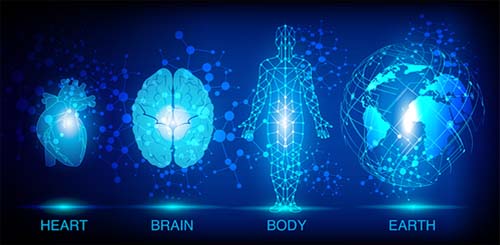
We are passionate and dedicated people, steadfast in our commitment to provide solutions for activating the heart of humanity. HeartMath Institute empowers individuals, families, groups and organizations to enhance their life experiences using tools that enable them to better recognize and access their intuitive insight and heart intelligence.
HeartMath Vision
A global shift is under way and people are sensing it involves a deeper connection with their heart. This desire for more heart connection is a growing movement, one that people are drawn to by a nudge from their own intuition or conscience to listen to their hearts more and to connect with their inner guidance. The voice or feelings of the heart have been referred to in writings and teachings throughout the millennia. HeartMath exists to help individuals, organizations, and the global community incorporate the heart’s intelligence into their day-to-day experience of life.
Whether people mention speaking from the heart, connecting with the heart, or following the heart, there is an increased energetic awareness of the importance of the heart’s intelligent input in life’s discernments and choices. It’s being experienced by millions who are coming into expanded global awareness and feel an inner need for the deeper resonance and nurturing of spirit that comes from heart-based connections. These connections can be between a person’s own heart and mind, or between people trying to build community through cooperative interaction.
HeartMath’s commitment is to help make these critical couplings possible. As these connections are established, the world we live in will be transformed. Coherent, heart-centered interactions will generate a higher vibrational consciousness field globally, increasing individual, social and global coherence and resonance. This will support co-creative alliances and draw in new intuitive solutions to our personal and global challenges.
HeartMath shows us a way to remake our world. It provides tools to connect with our inner guidance and technologies to help us be still enough to listen. Its research shows us how we can be empowered to become masters of ourselves and the quality of our future. Together, the tools, technologies and research enable us to realize our full potential as individuals and as a species to serve as caretakers for our planet and generations to come.
The Heart’s Intuitive Intelligence: A path to personal, social and global coherence
Visit also HeartMath Benelux
The Future Now Show
Shape the future now, where near-future impact counts and visions and strategies for preferred futures start. – Club of Amsterdam
Do we rise above global challenges? Or do we succumb to them? The Future Now Show explores how we can shape our future now – where near-future impact counts. We showcase strategies and solutions that create futures that work.
Every month we roam through current events, discoveries, and challenges – sparking discussion about the connection between today and the futures we’re making – and what we need, from strategy to vision – to make the best ones.
November 2019
Intuition / Life Energies
with
Peachie Dioquino-Valera
Scientists have always said: “In our physical plane, we have only discovered the tip of the iceberg.” When labels such as: “Esoteric Psychology”, “Esoteric Science/Scientist”, “Paranormal Psychology”, “Human Energy Science”, “Life Energies Science”, “Spiritual Metaphysics” are mentioned, most of us will either nod our heads in disbelief, violently shirk out of fear of the unknown, or fall into a curiosity muse. The above mentioned are claimed by some physicists, a few psychology professionals, and a minority of scientists to be emerging legitimate forms of knowledge-hopefully to be recognized in the future as a formal body of science with a definite set of universal laws. In Peachie’s talk she will delve on the recorded existence of Intuition, Life Energies, & Psychism based on her research and 16 years of experience taking on pro-bono cases that deal with real human (and spirit) cases in the Philippines. This will offer an insight too on why there is a booming economy and research on: alternative energy healing modalities i.e. Reiki, Pranic Healing, Crystal Healing, Sound Healing, etc.; paranormal investigators (who even aid organizations such as the FBI, CIA, or the police force and detectives); intuitive counsellors or therapists; and the like. This phenomenon of a topic has challenged humanity in the past, is still continuously being studied and recorded in the present, and will be discussed more in an academic and public setting in the Future, which will be considered highly evolutionary.
The Future Now Show
Credits
Peachie Dioquino-Valera, environmental activist, consultant, and speaker, and a Climate Reality Leader of The Climate Reality Project
www.climaterealityproject.org
Futures Learning Advisor of the Center for Engaged Foresight
https://engagedforesight.net
Biodesign
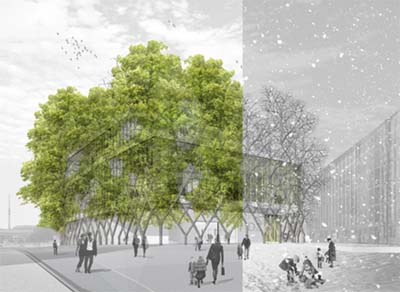
House of the future
Architects Ferdinand Ludwig and Daniel Schönle would like to revolutionize the way we build, or more appropriately “grow”, our buildings. Inspired by the ancient art of tree shaping – from Japanese Bonsai to India’s Living Tree Bridges – they have added modern materials, like metal scaffolding, to graft a 10-meter-high (33 feet) living tower near Germany’s Black Forest.
The Plane-Tree-Cube Nagold is their largest living plant structure yet though Ludwig has spent years experimenting with “baubotanik” (bau= building + “botanik” = botany) techniques, inspired by historical examples.
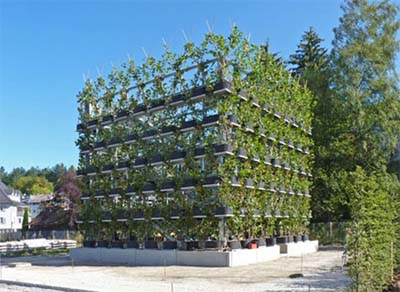
Plane-Tree-Cube Nagold
Ludwig’s first biodesigned structure was the Baubotanik Footbridge planted in 2005 as an initial attempt to get people into the canopy of the trees. Biodesign relies on processes that occur in nature, such as inosculation: a grafting process where the limbs of separate trees grow together, shedding bark and outer layers so the inner tissue and vasculature combines to create one organism. Another technique inspired by the events in the natural world is “uberballung” where a limb “grows over” another element, normally a metal beam or rod.
Baubotanik constructions evolve over time. As the trees grow together they become strong enough to be load-bearing and more and more of the metal infrastructure can be removed. Over time, the buildings become more tree and more alive.
Ludwig believes his Baubotanik methods can scale to buildings as high as a tree can grow (about 30 meters or 100 feet). “We made some design proposals even for whole streets where all the street trees are fused with the building in this way,” explains Ludwig. “So the people don’t live in a house, they live in a tree. For sure there are some rooms behind there that are traditional in a way, but if you go out of the door you stand in the tree, in the canopy.”
more at
Green Technologies in Landscape Architecture
Baubotanik shapes living tree branches into building facades
News about the Future

Earth Archive
The Earth Archive is both a program of scanning focused on endangered landscapes and an open-source collection of LiDAR scans accessible to scientists around the world.
LiDAR, Light Detection & Ranging, involves shooting a dense grid of infrared beams from an airplane towards the ground. It’s a high-resolution scan of the earth’s surface & everything on it. Not an actual image, but a dense three-dimensional cloud of points.
Earth Archive builds a virtual, open-source planet accessible to all scientists so we can better understand our world.
Archaeologists can discover undocumented settlements. Ecologists can study forest composition, tree size, age, and distribution. Geologists can study hydrology, faults, and disturbance. Modelers can project the future of our planet under many different climate scenarios. The possibilities are endless.
The Earth Archive is a bet on the future of humankind. A bet that together, collectively, as people & as scientists, that we will face the climate crisis. And that we’ll choose to do right thing. Not just for us today, but to honor those who came before us, and to pay it forward to future generations who will carry on our legacy.

Bringing Embodied Carbon Upfront
The World Green Building Council’s pioneering report demands radical cross-sector coordination to revolutionise the buildings and construction sector towards a net zero future, and tackle embodied carbon emissions.
Through the Advancing Net Zero project, and in partnership with European Climate Foundation, Children’s Investment Fund Foundation, C40 Cities and Ramboll, WorldGBC has developed a ‘call to action’ report focusing on these emissions, as part of a whole lifecycle approach, and the systemic changes needed to achieve full decarbonisation across the global buildings sector.
Buildings are currently responsible for 39% of global energy related carbon emissions: 28% from operational emissions, from energy needed to heat, cool and power them, and the remaining 11% from materials and construction.
Towards the middle of the century, as the world’s population approaches 10 billion, the global building stock is expected to double in size. Carbon emissions released before the built asset is used, what referred to as ‘upfront carbon’, will be responsible for half of the entire carbon footprint of new construction between now and 2050, threatening to consume a large part of our remaining carbon budget.
Therefore the built environment sector has a vital role to play in responding to the climate emergency, and addressing upfront carbon is a critical and urgent focus.
In “Bringing Embodied Carbon Upfront: Coordinated action for the building and construction sector to tackle embodied carbon”, WorldGBC has issued a bold new vision that:
By 2030, all new buildings, infrastructure and renovations will have at least 40% less embodied carbon with significant upfront carbon reduction, and all new buildings are net zero operational carbon.
By 2050, new buildings, infrastructure and renovations will have net zero embodied carbon, and all buildings, including existing buildings must be net zero operational carbon.
The report is critical to create a conversation around the value and importance of embodied carbon, with the aim of creating and stimulating market demand for transparency, improvements, and verification of embodied carbon reductions.
WorldGBC engaged with over 200 stakeholders throughout the process to produce the report and at the time of release has garnered over 80 endorsements from across the entire building and construction value chain including developers and construction companies, financial institutions, city networks and government, as well as industry representatives from concrete, steel and timber and many more.
Noise Polution
The European Environment Agency (EEA) has launched the most comprehensive map of noise exposure to date, revealing the extent to which European citizens are exposed to excessive acoustic pollution.
The NOISE (Noise Observation and Information Service for Europe) database provides, at the click of a mouse, a picture of the numbers of people exposed to noise generated by air, rail and road traffic across Europe and in 102 large urban agglomerations.
Noise is ubiquitous but its role as a key form of pollution with serious human health consequences is still underestimated. Prolonged exposure to even low levels of noise can trigger hypertension and disrupt sleep.
A first glance at Europe’s noise exposure map is far from soothing: it is estimated than half of the population in urban areas with more than 250 000 inhabitants endure levels above 55 dB Lden (the lower EU benchmark for an average 24-hour period) as a result of ambient road noise. Just over 41 million Europeans are exposed to excessive noise from road traffic alone in the largest cities.
Noise Pollution Is Much Worse For You Than You Think
Underwater noise polution
For fish, whales and other marine animals, intense underwater noises from blasts can cause acoustic trauma and even death. More common quieter noise, such as construction or shipping noise, may not kill the animals directly, but can disrupt their ability to find food, mates or avoid predators.
by OceanCare
What are the sources of ocean noise pollution?
Levels of anthropogenic (human-generated) noise have doubled every decade for the past 60 years in some regions. This destructive underwater noise is mostly caused by the military, the oil and gas industry and shipping traffic:
Air guns
Seismic airguns are primarily used for oil and gas exploration below the seabed and for geophysical surveys of the seafloor. Air is driven into the water at high pressure, sending intense and explosive sound pulses towards the seabed. These sounds can permeate thousands of metres of ocean before penetrating hundreds of kilometres into the ocean floor. Up to 40 airguns are fired in a tight sequence, each of them emitting sound every ten to fifteen seconds, often for 24 hours a day and for several weeks in the same area. Hydrophones are used to record and analyse the sound that reflects back to the sea surface. As easily extractable resources are already depleted, seismic surveys keep spreading into ever more sensitive marine habitats and into ever greater depths.
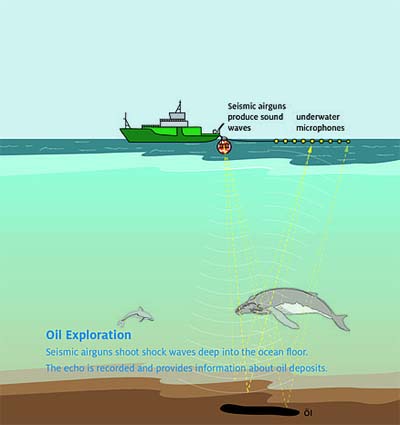
Military sonar
Active sonar is used by military vessels during exercises and routine activities to search for objects such as enemy submarines. These mid- and low-frequency sonar systems emit sound pulses of more than 100 seconds at a time for hours on end. These pulses are emitted with as much energy and in as narrow a range as possible. Low-frequency sonar serves as a way of putting large areas under surveillance and pervades thousands of cubic kilometres of water with sound. Mid-frequency sonar uses 0.1 to 10 kHz and can reach up to 230 decibels.
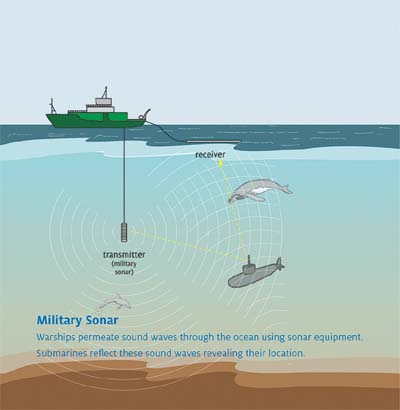
Shipping traffic
90% of globally traded goods are transported by ships which are generating an ever-present and constantly rising acoustic “fog” that masks natural sounds. Ships tend to produce low-frequency sound between 10 Hz and 1 kHz that can spread over huge distances and is the most common source of ocean noise.
Explosives
Explosives are detonated in the ocean by the military, for demolition purposes, or for testing equipment – e.g., ship-shock trials, whereby ships are deliberately struck with explosives to test their durability. These explosions cause extremely high noise levels across a wide frequency range and are characterised by rapid rise times.
Construction works
Construction works in harbours as well as pile-driving for offshore wind farms and oilrigs are generating intensive noise emissions, too.
Why the ocean is getting louder
Recommended Book

Human Compatible: AI and the Problem of Control
By Stuart RussellCreating superior intelligence would be the biggest event in human history. Unfortunately, according to the world’s pre-eminent AI expert, it could also be the last.
In this groundbreaking book on the biggest question facing humanity, Stuart Russell explains why he has come to consider his own discipline an existential threat to our species, and lays out how we can change course before it’s too late. There is no one better placed to assess the promise and perils of the dominant technology of the future than Russell, who has spent decades at the forefront of AI research. Through brilliant analogies and crisp, lucid prose, he explains how AI actually works, how it has an enormous capacity to improve our lives – but why we must ensure that we never lose control of machines more powerful than we are. Here Russell shows how we can avert the worst threats by reshaping the foundations of AI to guarantee that machines pursue our objectives, not theirs.
Profound, urgent and visionary, Human Compatible is the one book everyone needs to read to understand a future that is coming sooner than we think.
North Sea Wind Power Hub
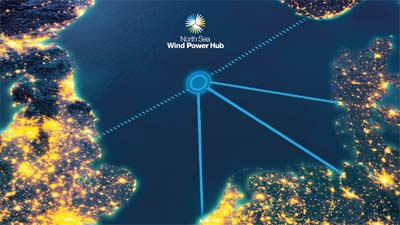
North Sea Wind Power Hub vision
The North Sea Wind Power Hub consortium has joined forces to realize climate goals. The consortiums work is based on research, stakeholder interaction and experience from earlier projects. Partners in the consortium are TenneT, Port of Rotterdam, Energinet and Gasunie.
The North Sea Wind Power Hub Consortium initial study and test results are gathered in six concept papers. The goal of the concept papers is to inform North Sea stakeholders, and the general public, of the results the NSWPH has obtained working on the modular Hub-and-Spoke concept over the last two years. The six concept papers tell one story: from the challenge to meet the Paris Agreement, through the solution building on the modular Hub-and-Spoke concept, to the next steps required to meet the Paris Agreement timely and in a cost-effective manner.
Juli 2019 – The international consortium partners of the North Sea Wind Power Hub (NSWPH) presented the results of the project’s assessment phase. Over the past months, the consortium has been analysing the possibility and conditions required to build one or several wind power hubs in the North Sea. The consortium has conducted a wide range of studies, investigated a number of different scenarios and conducted intense engagements with policy makers, leading offshore wind farm developers and Non-governmental organisations (NGOs).
Summary of key findings
- The proposed Hub-and-Spoke concept is technically feasible
- A gradual roll-out of 10 to 15 gigawatts hubs is the next logical step towards a large offshore wind build-out
- A first Hub-and-Spoke project will likely be electrically connected to shore and with additional power-to-gas to provide energy system flexibility and could be operational in the 2030s
- While it is likely possible to build a first Hub and Spoke project within the current regulatory framework and market design, i.e. current EU and national legislation, significant changes are required in national practices, approaches, planning and policies in order to allow for integrated infrastructure projects such as the modular hub concept being part of the long term energy transition
- According to all international studies and scenarios the large scale roll-out rate of offshore wind is crucial to meet “Paris targets”. Acceleration is needed
- As the North Sea is hosting a large potential for offshore wind power, the implementation of 180 gigawatts offshore wind can be achieved by 2045 by the consortium’s approach
- An international coordinated approach could connect and integrate large scale offshore wind more effectively and with significant lower costs compared to a continued individual national planning
- Long term market security is needed for all stakeholders to invest and build-up the required supply chains
- Urgent agreements on developing sustainable energy from offshore wind after 2030 are needed
- Consortium has started and facilitates discussion with governments, Non-Governmental Organisations (NGOs), policy makers and industry: close cooperation and support is needed by setting up consultation processes and international agreements
- Balanced decision making is required by policy makers and spatial planners to weigh the environmental impact of offshore wind farm developments against its techno-economic impact, and the urgency to meet the long-term climate goals
- Using power-to-gas conversion and transmission in combination with coupling with other sectors will bring benefits to the overall energy system
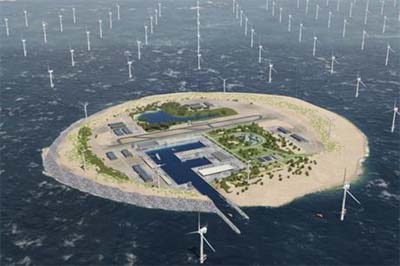
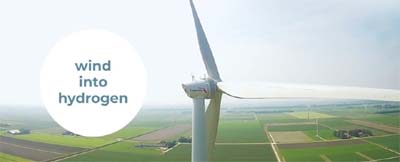
The world’s first hydrogen wind turbine is to become a reality in the Wieringermeer area at the start of 2019. This is the objective of a partnership formed between initiator and sustainable hydrogen supplier HYGRO, wind turbine manufacturer Lagerwey and research institute ECN.
Climate Change Success Story: Freiburg Green City

It is with some justification that Freiburg regards itself as one of the birthplaces of the environmental movement. Freiburg‘s sustainability process began as far back as the 1970s with the successful action against the Wyhl nuclear power plant, one of the founding myths of the alternative-green movement.
This was then continued by socio-civic initiatives that formed part of the „Local Agenda 21“ process and the signing of the Aalborg Commitments, as well as the associated sustainability targets set by the Freiburg Sustainability Council and adopted by the Municipal Council in 2009, which form the basis for any political action.
The Sustainability Management unit was set up at the start of 2011 as a coordination and central control office, to systematically develop the ‚green profile‘ of the City of Freiburg for the future. Reporting directly to the Lord Mayor, its role involves developing an integrated sustainability management policy to steer the city‘s overall urban sustainability process, pooling experiences and acquiring new skills to meet future challenges.
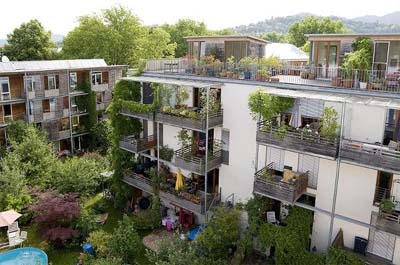
A wealth of projects and the innumerable activities and initiatives that help to implement Freiburg‘s sustainability targets, attest to the city‘s comprehensive commitment to sustainable development. For its commitment, the city of Freiburg was honoured with the German Sustainability Award in 2012, presented for the first time to towns and municipalities, as the most sustainable city in Germany. The prize was awarded specifically to reflect the city‘s unique sustainability infrastructure, comprising the Sustainability Management unit reporting to the Lord Mayor, as well as the commitment of urban societies, offices and agencies combined with an active body of citizens.
Freiburg is regarded today as a model for the reconciliation of „soft“ ecology and „hard“ economics. Environmental policy, solar technology, sustainability and climate protection have become the drivers of economic and political growth along with urban development. And yet, what matters even more than prizes and global back-slapping, is the fact that the people of Freiburg identify strongly with this policy and their city.
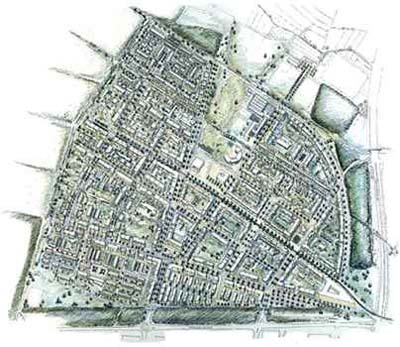
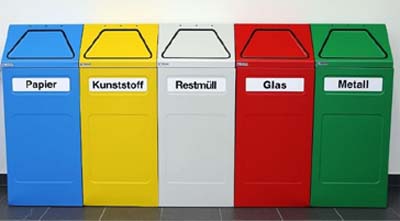
Green Revolution – The Freiburg Model | Made in Germany
Futurist Portrait: Jerry Kaplan
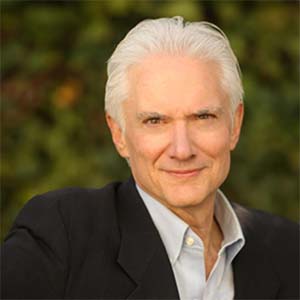
Jerry Kaplan is widely known as an Artificial Intelligence expert, serial entrepreneur, technical innovator, educator, bestselling author, and futurist.
A renowned Silicon Valley veteran, Jerry Kaplan founded several storied technology companies over his 35-year career, two of which became public companies. Kaplan may be best known for his key role in defining the tablet computer industry as the founding CEO of GO Corporation in 1987. Prior to GO, Kaplan co-founded Teknowledge, Inc., one of the first Artificial Intelligence companies to commercialize Expert Systems, which went public in 1986. In 1994, Kaplan co-founded Onsale, Inc., the world’s first Internet auction website, which went public in 1997. In 2004, he pioneered the emerging market for social games by starting Winster.com, where he served as CEO for eight years.
Jerry Kaplan is currently a Lecturer and Research Affiliate at CDDRL, a Visiting Lecturer in Computer Science, and a Fellow at the Center for Legal Informatics at Stanford University Law School. His research and teaching focusses on the social and economic Impact of Artificial Intelligence. He is an inventor on more than a dozen patents, and has published over twenty refereed papers in academic journals and conference proceedings. Kaplan holds a PhD in Computer and Information Science from the University of Pennsylvania, and a BA in History and Philosophy of Science from the University of Chicago.
Jerry Kaplan is the author of three books, including the best-selling classic “Startup: A Silicon Valley Adventure” (Houghton-Mifflin). Selected by Business Week as one of the top ten business books of 1995, Startup was optioned to Sony Pictures. “Humans Need Not Apply: A Guide to Wealth and Work in the Age of Artificial Intelligence” (Yale University Press) was honored by The Economist as one of the top ten science and technology books of 2015. His latest book, “Artificial Intelligence: What Everyone Needs to Know” (Oxford University Press) was a 2016 Amazon new release #1 best seller in Artificial Intelligence.
Jerry Kaplan has been profiled in The New York Times, The Wall Street Journal, Forbes, Business Week, Red Herring, and Upside. He is a frequent commentary contributor to major newspapers and magazines. He received the 1998 Ernst & Young Emerging Entrepreneur of the Year Award, Northern California; served on the Governor’s Electronic Commerce Advisory Council Member under Pete Wilson, Governor of California (1999); and received an Honorary Doctorate of Business Administration from California International Business University, San Diego, California (2004).
Jerry Kaplan: “Making Machine Learning Great Again” | Talks at Google

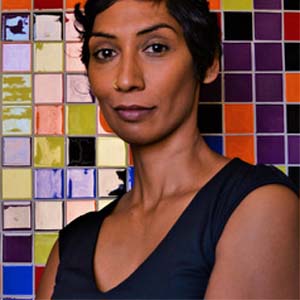

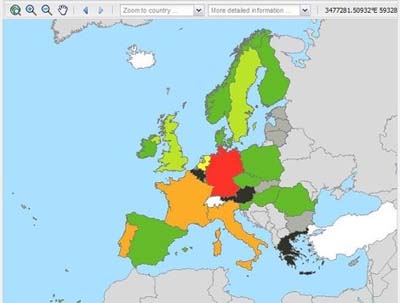



Customer Reviews
Thanks for submitting your comment!